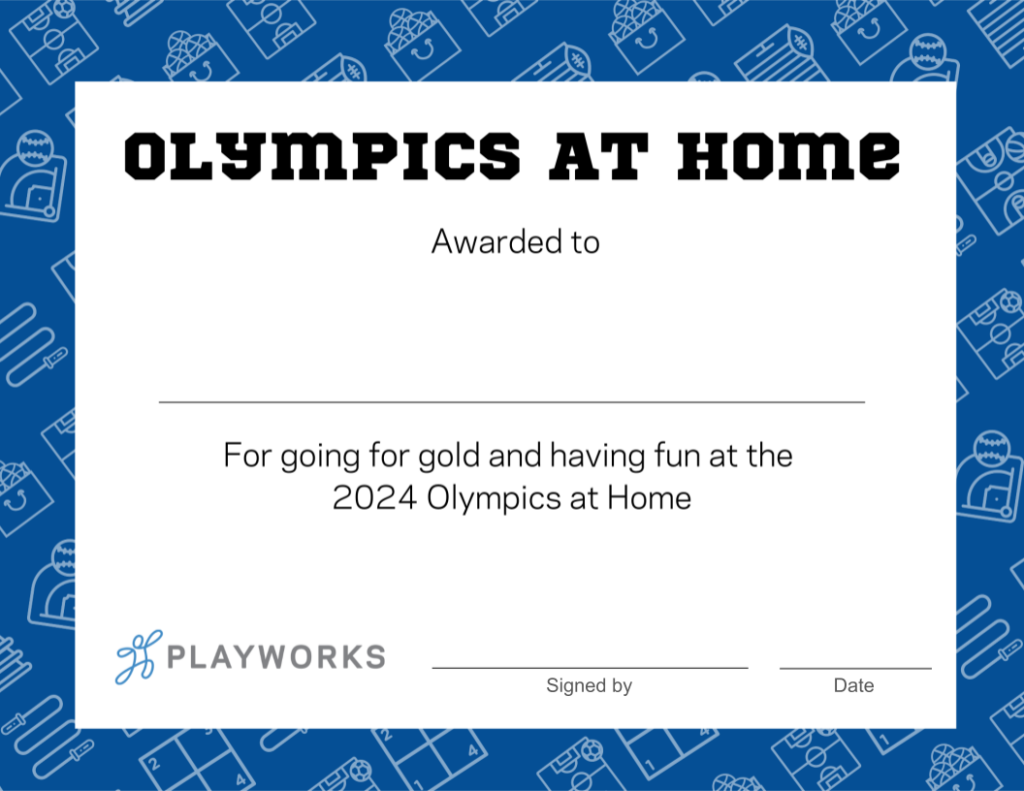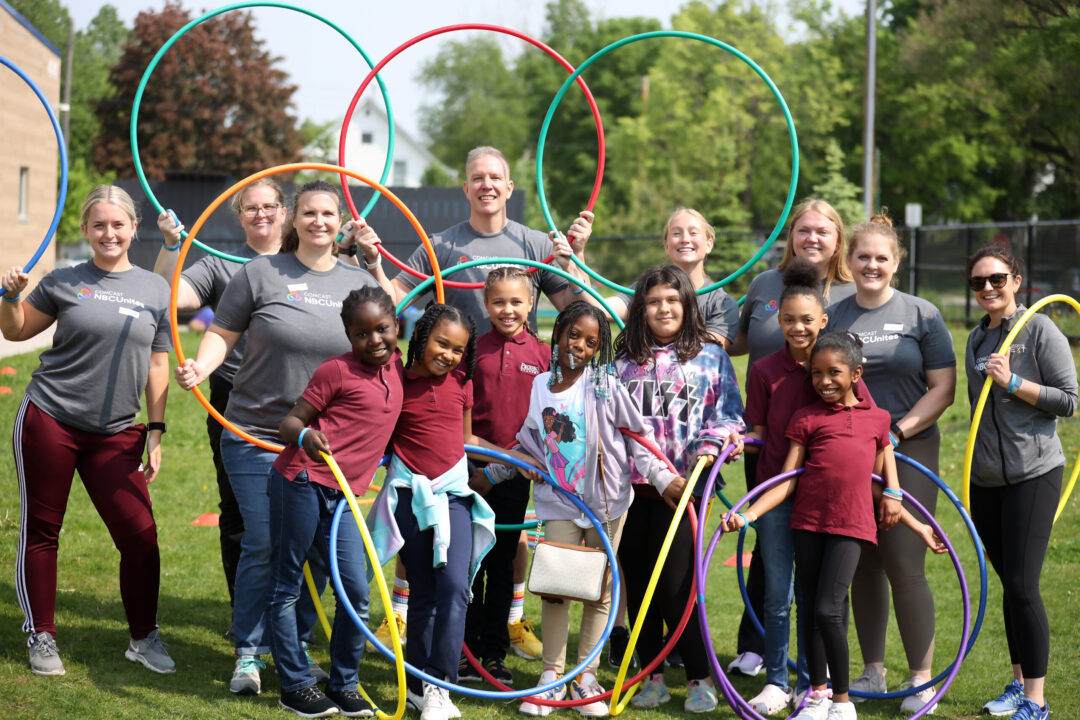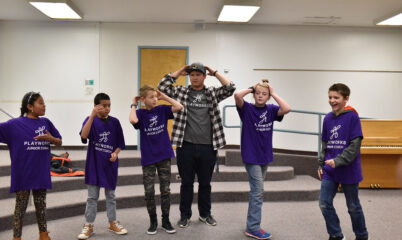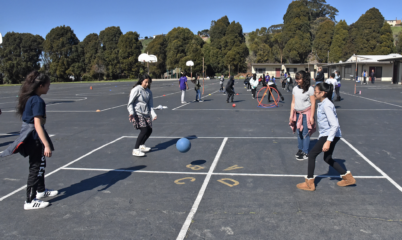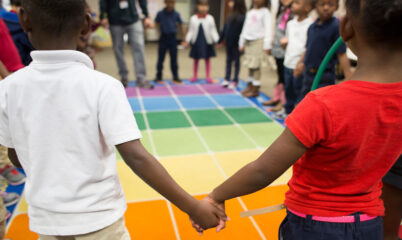Sports fans across the globe are gearing up for the 2024 Summer Olympic Games. The Olympics are an exciting opportunity to celebrate outstanding athletes, cheer on teams from around the world, and inspire kids to be active and get in the game!
As the world’s best athletes get ready to compete in Paris, here are a few fun games to help bring the excitement and spirit of the Olympics to kids at camp, at community events, at the neighborhood park, and even at home.
Opening Ceremonies
Kick off the games with these easy icebreaker activities to help get kids warmed up and ready to play.
“Zip, Zap, Pop” is a lively circle game perfect for developing concentration and peer interaction. In this game, players pass three actions around the circle in sequence: a “Zip” involves a hand gesture and is passed to a neighbor, a “Zap” follows similarly, and a “Pop” sends the action across the circle. If a player hesitates, they leave the circle and cheer on the others. This game encourages quick thinking and social engagement, making it a great choice for group play.
Players sit or stand in a circle, with one person in the center who starts the game by saying, “I love my neighbor, especially my neighbor who…,” followed by a characteristic that applies to them, such as “has a pet” or “likes to play basketball.” Everyone who shares that trait must find a new spot in the circle, while the person left without a spot takes the center position for the next round. This game helps players build connections by identifying shared interests and characteristics.
Players start by walking around the designated area in various fun ways, such as zombie walks or slow-motion walks. When the leader says, “I see, I see,” the players freeze and ask, “What do you see?” The leader then describes an action, like “I see a superhero flying in the sky,” which the players act out until the game continues with a new prompt. This game helps develop creativity, self-confidence, and spatial awareness while ensuring everyone can participate equally.
Team & Relay Games
From swimming to track, the Olympics feature many relay-style events where athletes work cooperatively to reach a common goal. Add these relay games to your next play time for some team-based fun.
Players are grouped into teams of four, with each team holding a ball between all of their backs while their arms are linked. The objective is to transport the ball to the finish line without dropping it, requiring coordination and communication among team members. This game is perfect for encouraging physical activity and fostering collaboration in a fun and dynamic way.
Teams of 4-6 players take turns running back and forth between two cones, handing off a baton or similar object to the next runner. The objective is to keep the relay going without pauses or errors in the handoff, encouraging continuous movement and teamwork. This game can be varied by introducing different movement styles like skipping or crab walking, and adding simple obstacles for extra fun.
Players form two lines (teams) and face each other. Starting on a signal, the first players move towards each other, engaging in rock paper scissors upon meeting. The winner advances in the same direction while the other team sends their next player. This process repeats until a player successfully crosses to the other side, rejoining their team while new players start again.
Sports-Inspired Games
Soccer, basketball, and now even flag football are all a part of the Summer Olympic festivities. Here are some unique variations of common ball games.
Participants form teams of three players each. One team starts with possession and aims to score while the opposing team defends. After each possession, teams rotate based on scoring or defensive outcomes, with players waiting in line cheering on their teammates. The goal is for a team to score first and continue playing until they win three consecutive games, earning applause before returning to the end of the line.
In this game, players take turns as quarterback, receiver, and defender in each round. The quarterback aims to throw the ball to the receiver, who tries to reach the end zone without being tagged by the defender. The roles rotate after each round based on outcomes such as catches, tags, or scoring, ensuring everyone gets a chance in each position.
Players are divided into two groups with each group having a stack of cones on opposite sides of the play area. With two (or more) soccer balls in play, the goal is to use the balls to knock down the opposing team’s cones. After knocking down a cone, players retrieve it and line it up on their side of the field. The game concludes when one team successfully moves all the cones to their side, with multiple balls ensuring active participation throughout.
Divide players into infield and outfield teams on a kickball field. Each kicker can kick a kickball, punt a football, or throw a frisbee, then run around the bases continuously while outfielders retrieve and place the equipment at designated bases. The goal is to place the equipment correctly before the runner reaches home base. This game helps develop teamwork, understanding of a kickball field’s structure, and the importance of playing assigned positions in a team sport.
Solo & Small Group Games
For kids who enjoy small group activities, these games are perfect for staying engaged and developing physical and social skills.
Each player throws a ball or object into the air and tries to clap as many times as possible before catching it. This game can be played individually or in groups, and it can be modified by using different objects or adding challenges.
Players take turns hitting a ball against a wall, allowing it to bounce once on the ground before reaching the wall and once again before being returned by the next player. The game continues until a player hits the ball out of bounds or does not allow for the correct number of bounces. This game can be played with two players, a small rotating group, or even individually.
Players start at the starting line and move towards the finish line when “Green Light” is called. When “Red Light” is called, they must stop immediately; if they move, they return to the start. The game ends when most players reach the finish line, and variations can include different movements for additional colors. Learn to play
Olympic Games are not complete without celebrating the achievements of the athletes’s accomplishments. Download and print this certificate to award to your at-home Olympians and enjoy all of the fun and excitement of the 2024 games!
